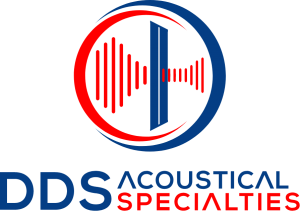
The Impact of Workplace Noise Exposure: Effects and Prevention
In today’s dynamic work landscape, the omnipresent soundscape is an integral facet of the daily grind. Yet, delving beyond the surface, the repercussions of noise exposure in workplaces stretch far beyond simple inconvenience. This article delves into the multifaceted effects of workplace noise exposure and proposes strategies to counteract its potential impact.
Deciphering Workplace Noise Exposure
Workplace noise exposure encompasses the presence of extended periods of excessive noise within professional environments. The sources of such noise are manifold, encompassing machinery operations, equipment rumbles, animated discussions, and even construction undertakings. While noise is an inescapable element, prolonged exposure to elevated noise levels can elicit serious health concerns for employees.
Instances of Workplace Noise Exposure
Manufacturing and Industry: Industrial setups are often rife with reverberations from heavy machinery like presses, conveyors, and assembly line gear. Employees operating in such environments face prolonged exposure to amplified noise, heightening their susceptibility to hearing impairments and stress-induced health issues.
Construction Zones: The construction domain reverberates with workplace noise exposure, primarily emanating from the clamor of heavy-duty equipment like excavators, bulldozers, and pneumatic drills. The workforce within this sphere is subject to a symphony of loud apparatus and tools, rendering them predisposed to noise-induced hearing loss and escalated stress levels.
Open-Plan Offices: The advent of open-plan office layouts, while fostering collaboration, concurrently ushers in escalated noise levels. The background hum of office equipment, coupled with telephonic conversations and animated dialogues, forms a backdrop that fractures concentration, triggers stress, and corrodes productivity.
Call Centers: The realm of call centers constitutes another avenue of noise exposure. Here, agents grapple with a milieu resonating with multiple concurrent conversations. The constant auditory milieu, juxtaposed with the need to engage customers, engenders cognitive fatigue, curtailed job contentment, and potential vocal strain.
Healthcare Hubs: Medical facilities, teeming with diverse diagnostic equipment and life-support apparatus, often generate noise ranging from alarms to ventilator hums. Healthcare practitioners, necessitating acute focus and communication precision, may find their performance hampered within such bustling acoustic landscapes.
Mitigating and Countering Noise Exposure
Engineering Countermeasures: Employing engineering interventions emerges as a potent tool to mitigate workplace noise exposure. In industrial settings, enveloping noisy machinery within soundproof enclosures effectively arrests noise propagation. Open office spaces can harness partitions and sound-absorbing panels to amass sound, fostering a more serene ambiance.
Administrative Strategies: Strategic choreography of tasks intertwined with noisy operations, combined with periodic reprieves in tranquil pockets, can assuage the repercussions of noise exposure. On construction sites, scheduling noisy tasks during designated hours can temper their impact on the workforce’s welfare.
Personal Protective Gear: In scenarios where noise reduction remains an intricate feat, equipping personnel with noise-canceling headphones or earplugs assumes significance. Call center operatives can don noise-canceling headphones to sift through background clatter, augmenting their focus during customer interactions.
Educational Outreach: Cultivating consciousness among staff regarding the risks entailed by workplace noise exposure, alongside disseminating knowledge about preventive stratagems, holds immense potential. Regular training sessions in healthcare settings, emphasizing hearing conservation and communication tactics in bustling arenas, can bolster employee preparedness.
Adherence to Regulations: Several jurisdictions have set forth regulations dictating permissible workplace noise exposure thresholds. Employers must uphold these stipulations to safeguard employee well-being. Frequent noise assessments and vigilant monitoring serve as conduits to discern areas necessitating remediation.
Conclusion
Workplace noise exposure constitutes a formidable professional hazard, wielding the power to permeate employee health and efficacy. From auditory afflictions to stress-induced maladies, the ripple effect of undue noise is undeniable. However, by weaving strategic mechanisms into the professional fabric, employers can craft an ecosystem rife with well-being and heightened productivity. Through the orchestration of engineering interventions, administrative tactics, educational initiatives, and regulatory adherence, employers hold the key to diminishing noise exposure and its collateral implications. Elevating employee welfare, underpinned by addressing noise, surfaces not only as an ethically congruent stance but also as a strategic gambit. The payoff emerges in the form of heightened morale, amplified output, and reduced instances of absenteeism.
-
April 11, 2024
Acoustic Improvements at Provincetown Public Library
-
November 16, 2023
How to Soundproof a Room
-
September 26, 2023
Quieting the Racket: Understanding Pickleball Noise and Effective Solutions




